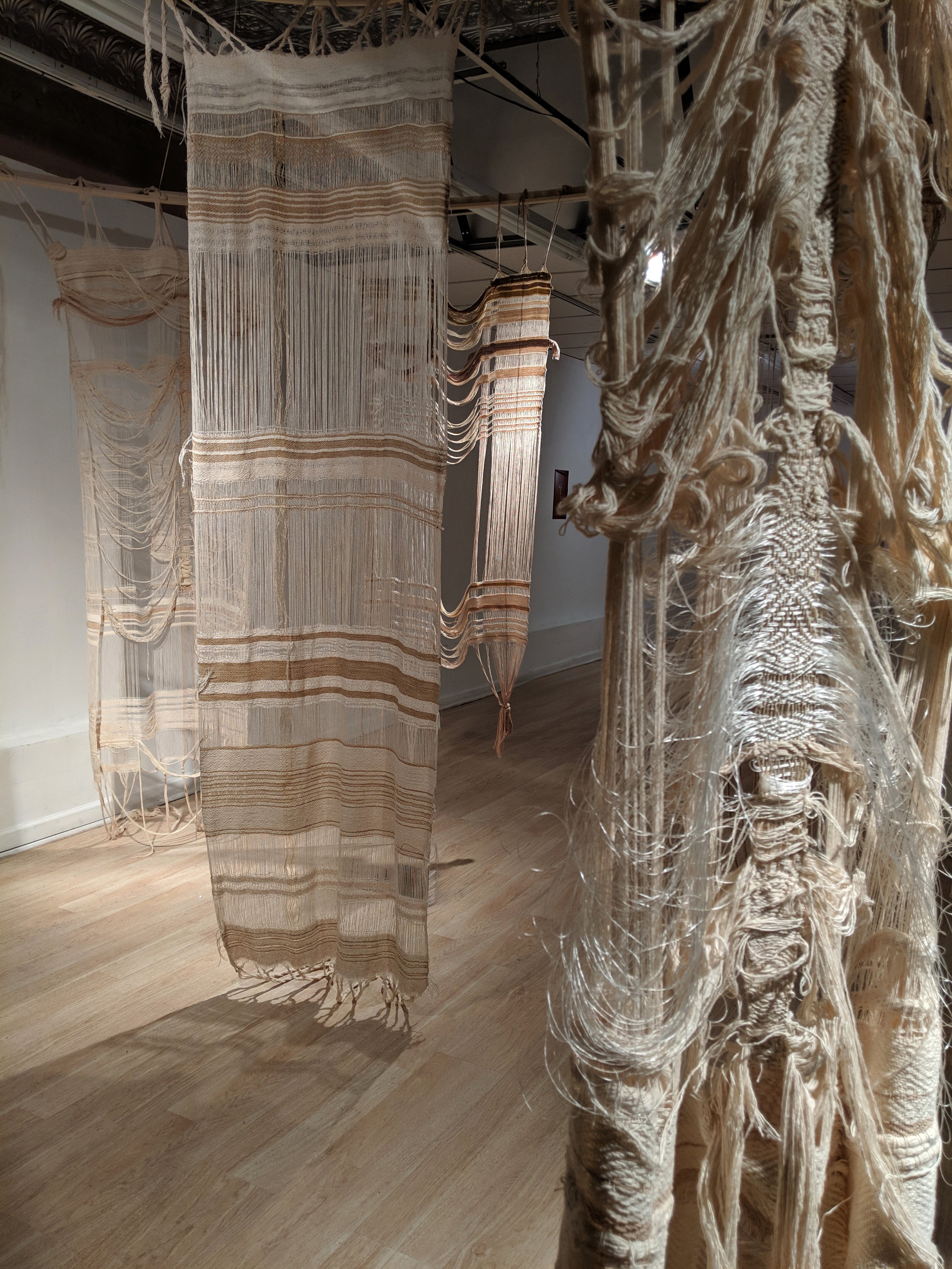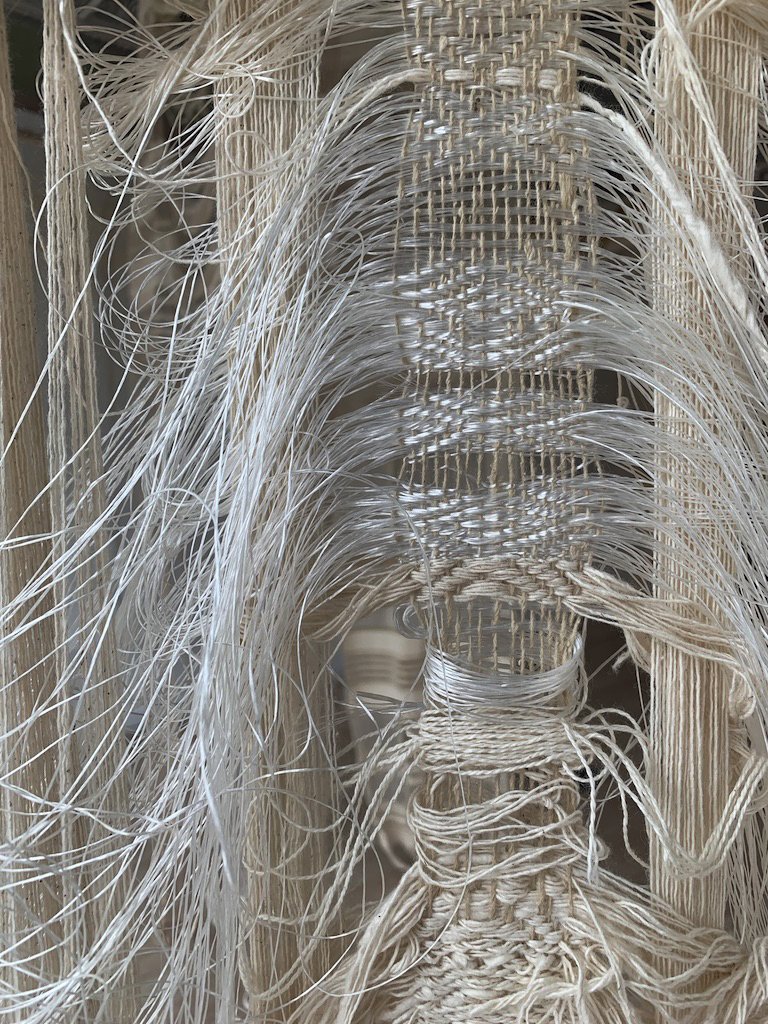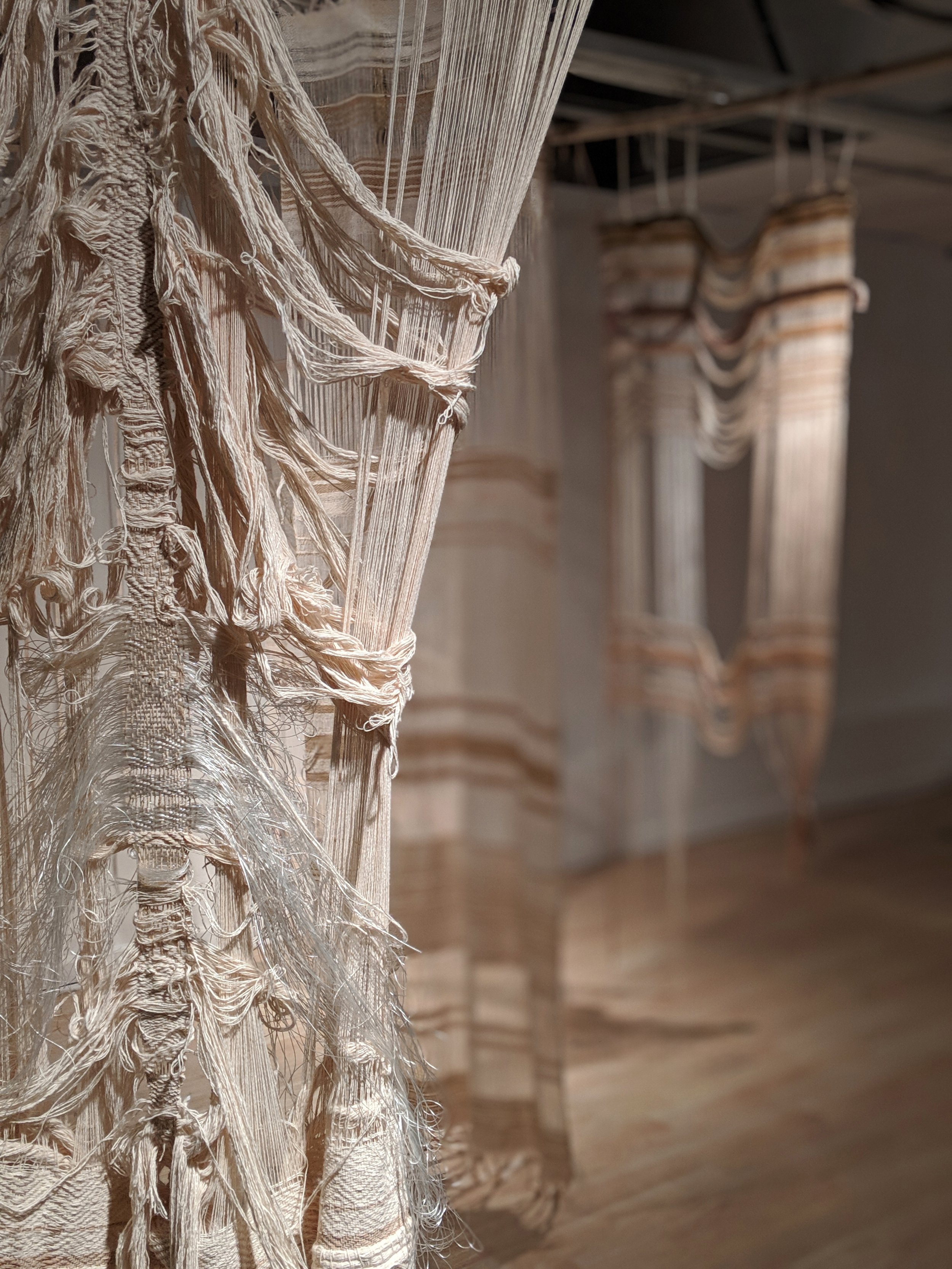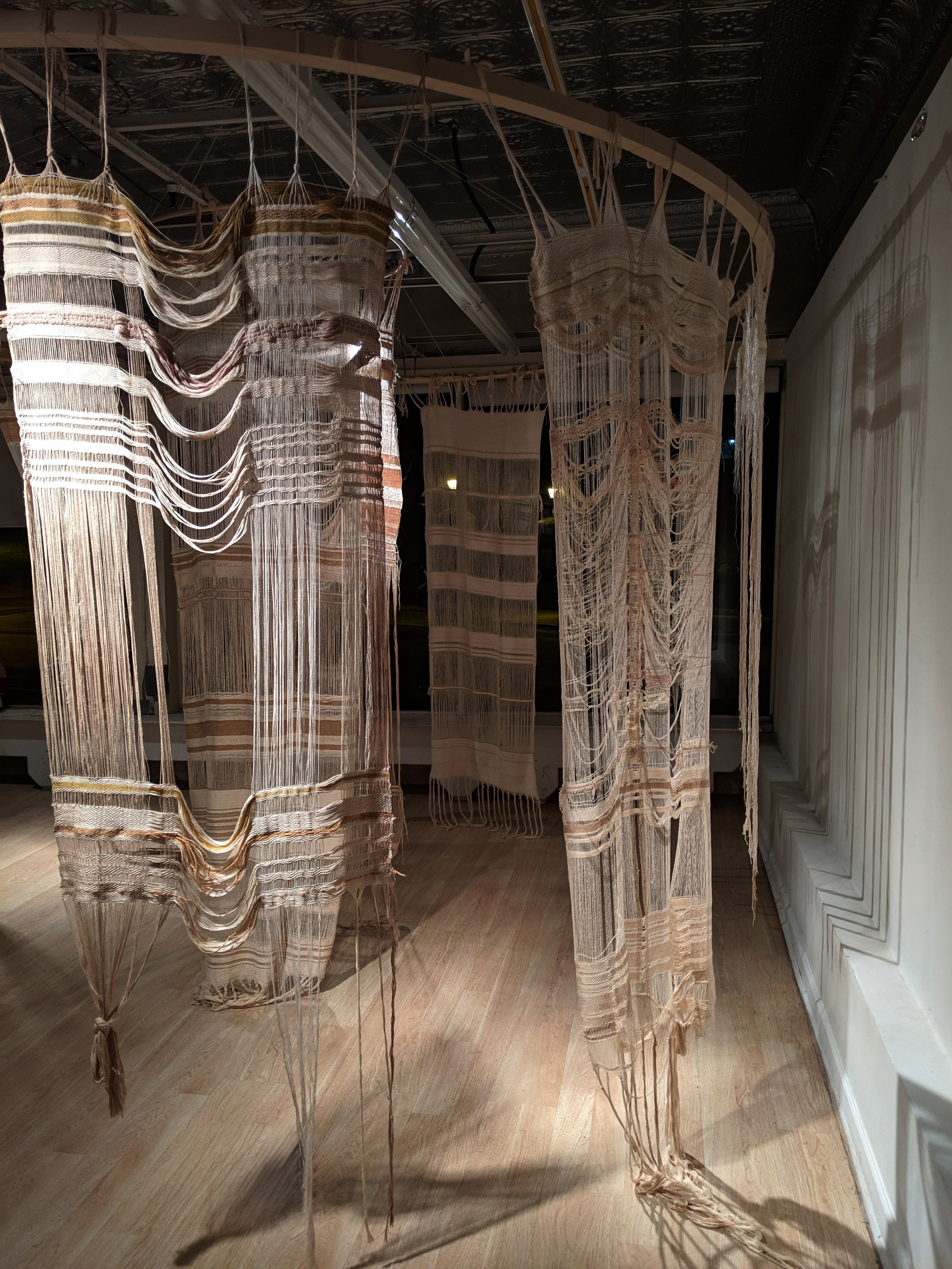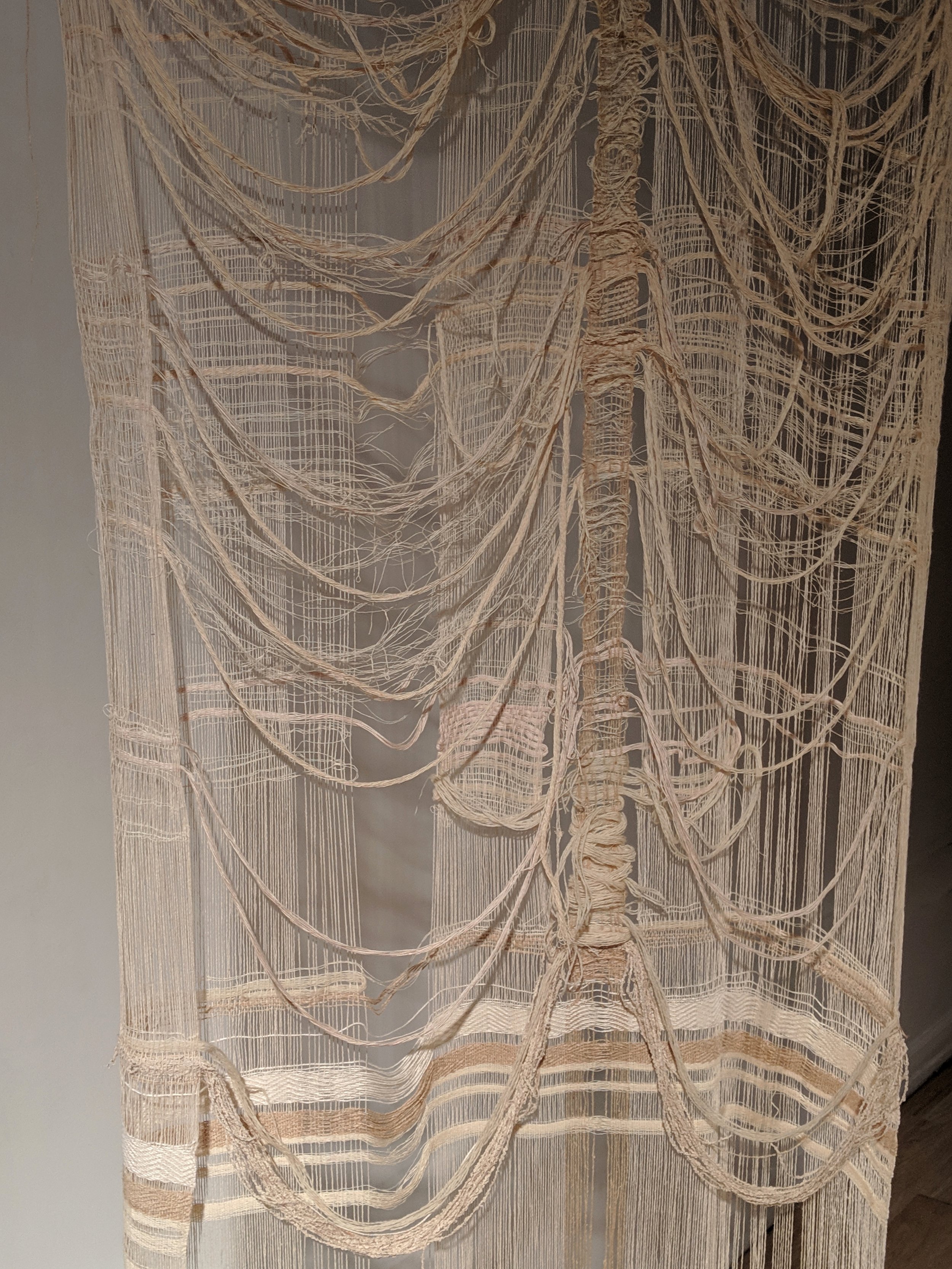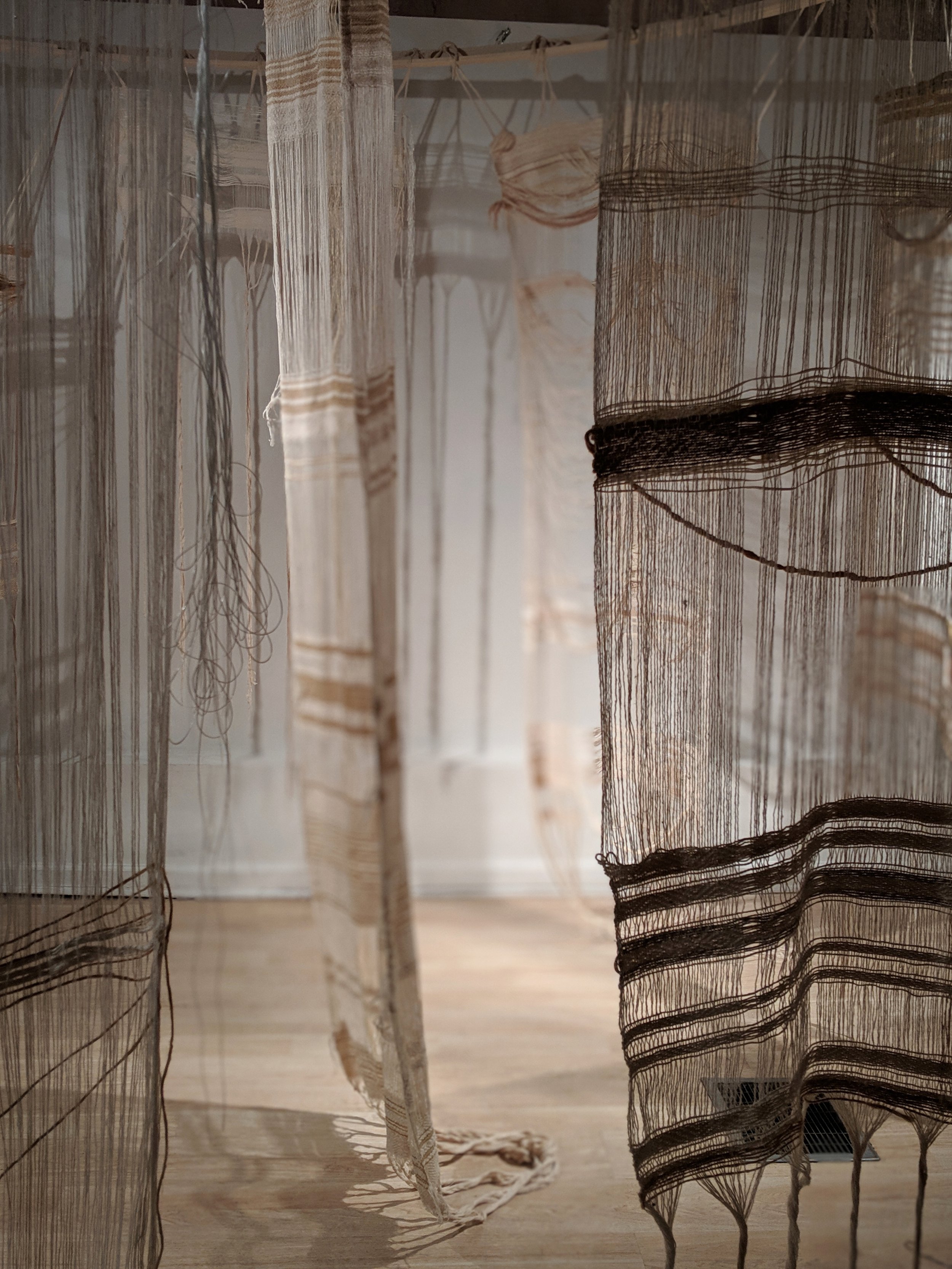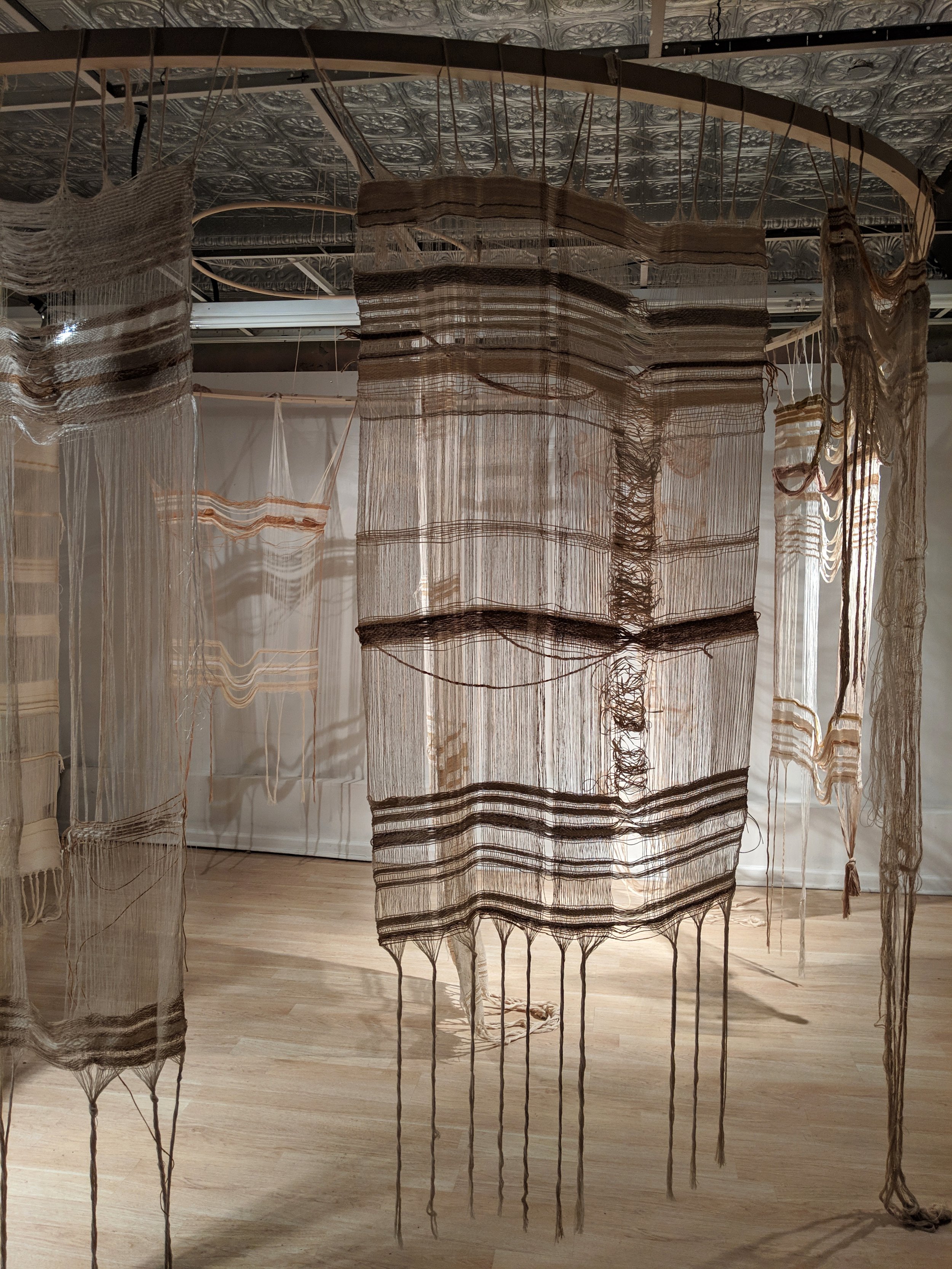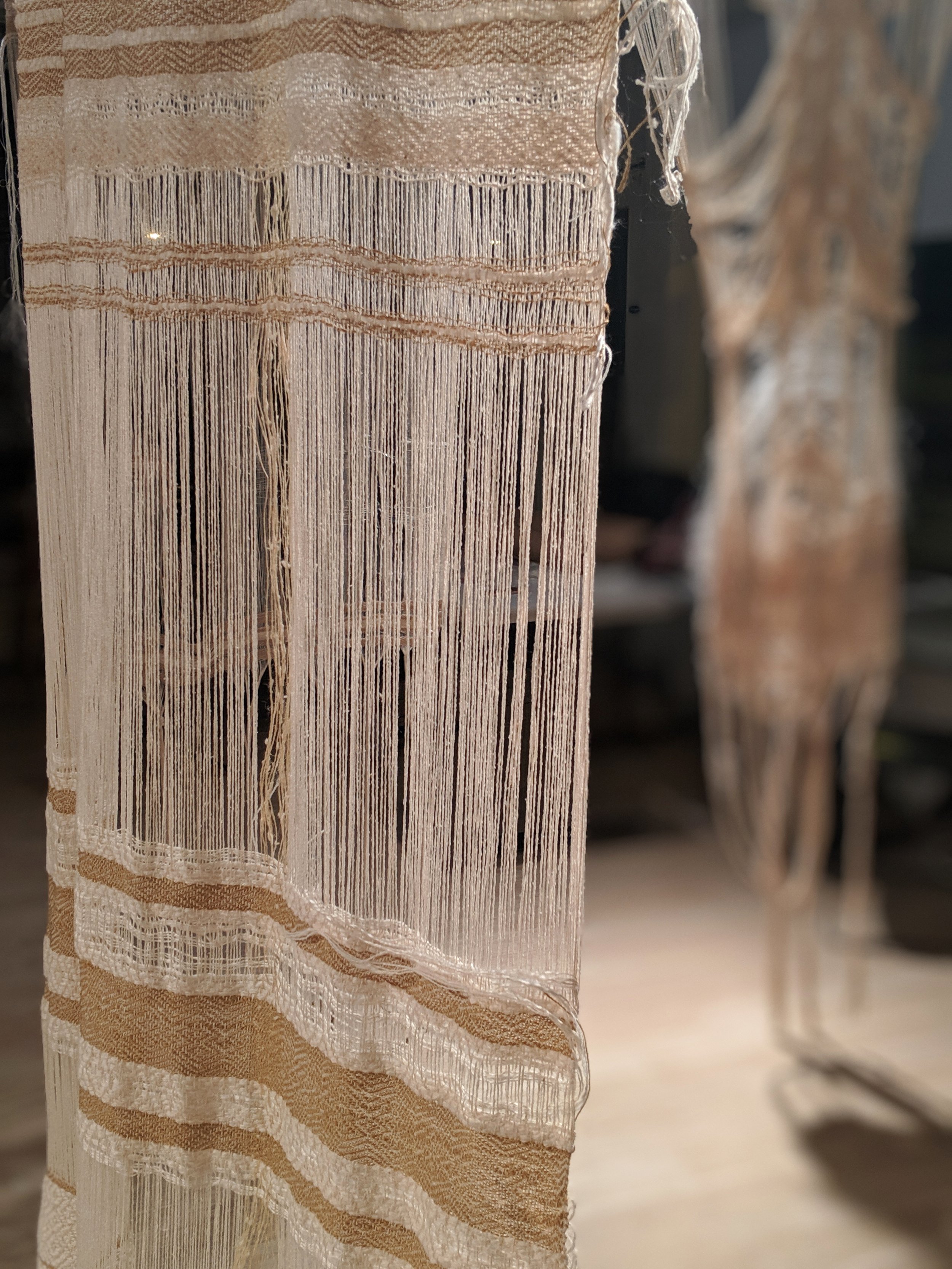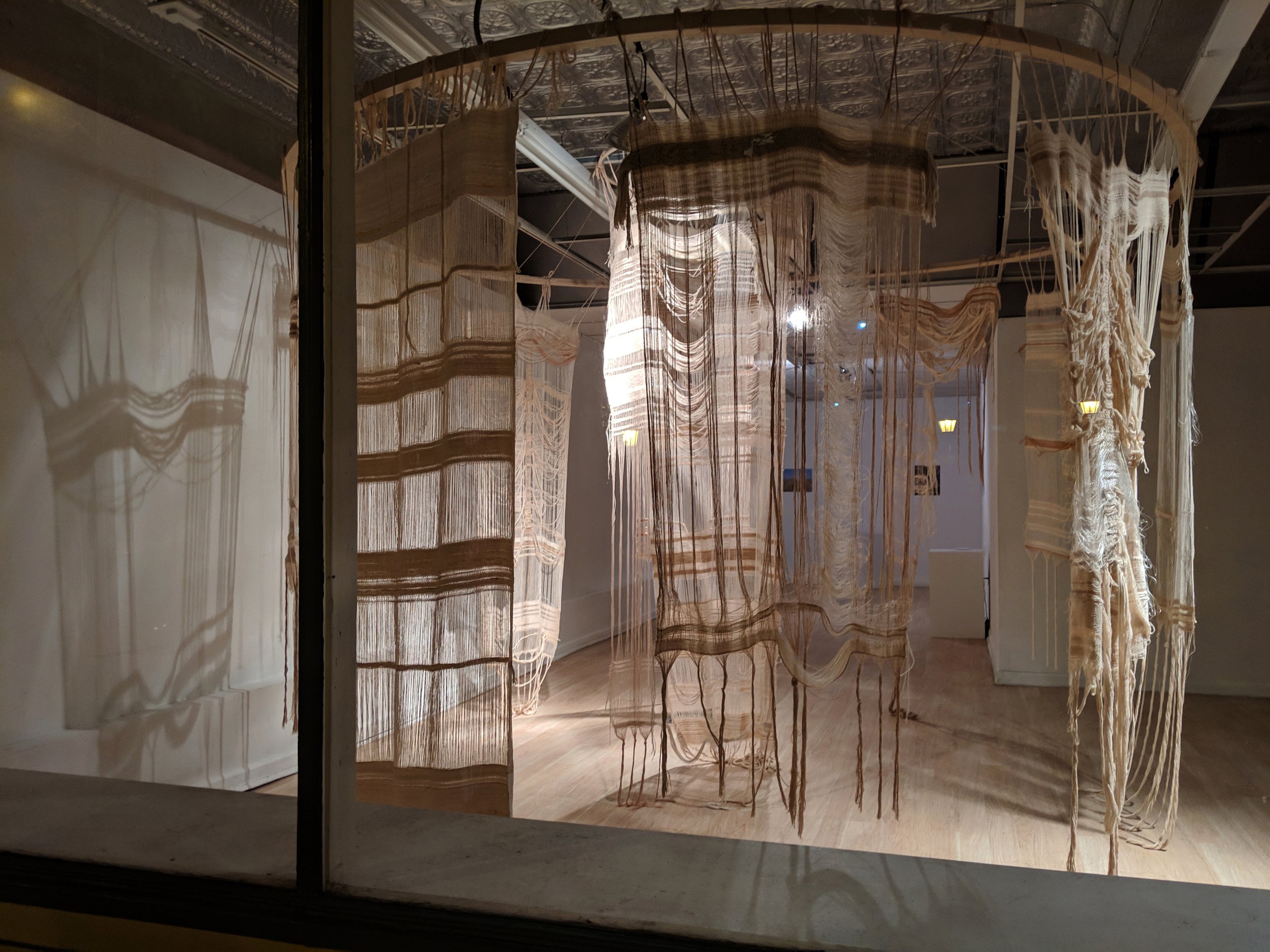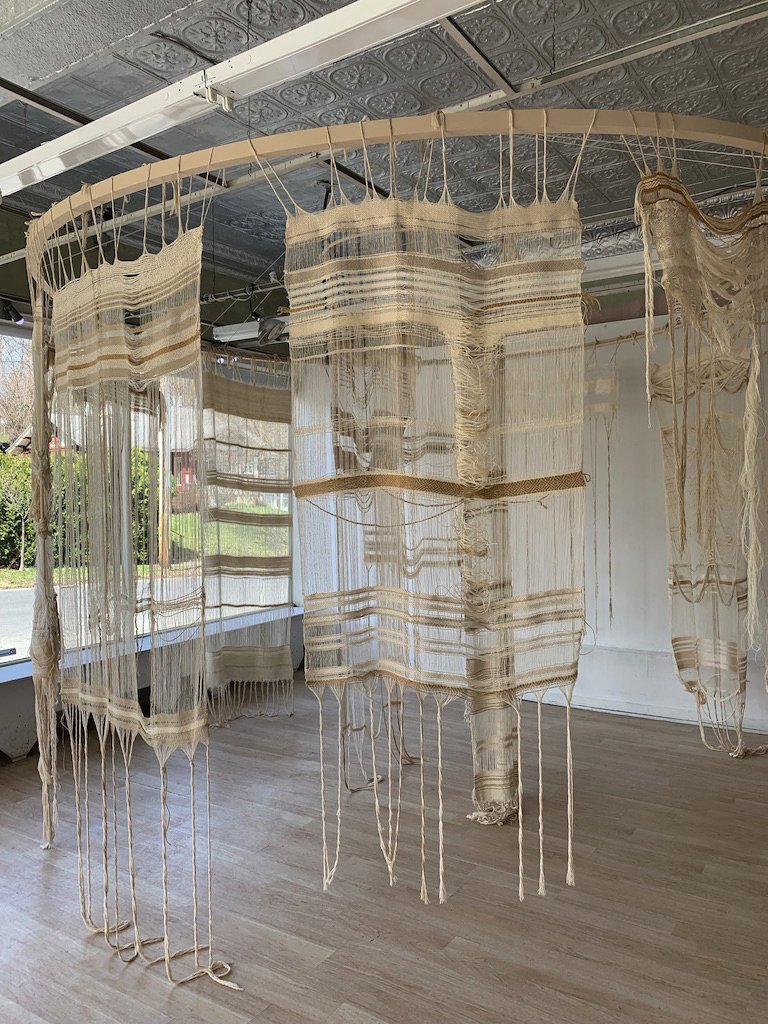Detail shots of Twelve Sisters (installation i)
Apostrophe S is pleased to present No Man’s Land, a two-part exhibition of works by Drew Davis, Brett Morgan, Meirav Ong, and Siyaka Taylor-Lewis. No Man’s Landcenters itself around the theme of place; natural, domestic, and spiritual, with works that challenge historical narratives, cultural stereotypes, and taboos that have marginalized and erased minority populations in this country. Place is central to one's understanding of self and each artist in this show is processing how they address this within their personal experience and identity.
The artists in this exhibition interpret “No Man’s Land” both literally and metaphorically through a diverse range of media, including ceramics, photography, and weavings. Davis explores the physical landscapes of his home through his investigation of commodification and industrialization of land in settler colonialism. Siyaka Taylor-Lewis uses photography to document the interior spaces of his family and friends to explore how their experiences connect to the larger black experience and its histories and traditions.
Ong and Morgan interrogate the politics of “No Man’s land” through spaces that have been exclusionary to their identities. Presenting a feminist critique to the male dominated prayer spaces within orthodox Judaism, Ong uses weavings to create a space for the Feminine Divine to find refuge within. Morgan, using country kitsch Americana objects, critiques these objects as a way to reclaim the domestic space as a place where queerness can be expressed and celebrated.



